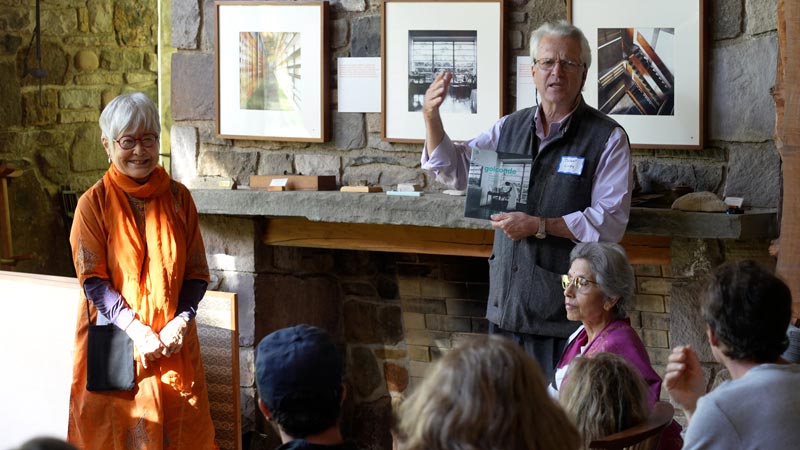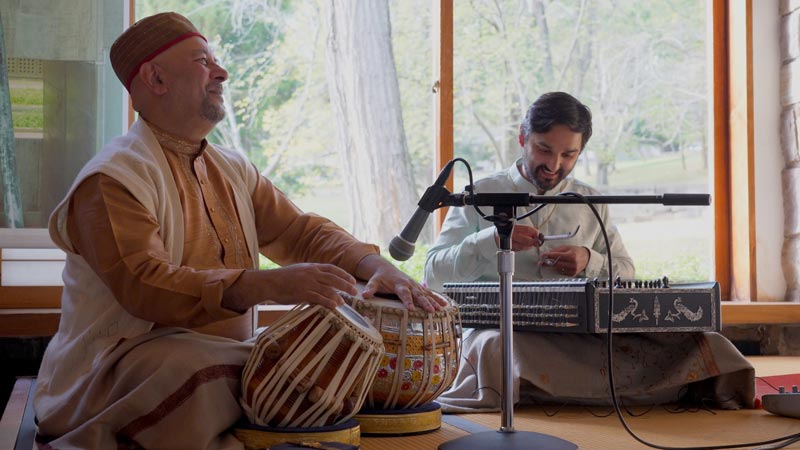Golconde: The Introduction of Modernism in India
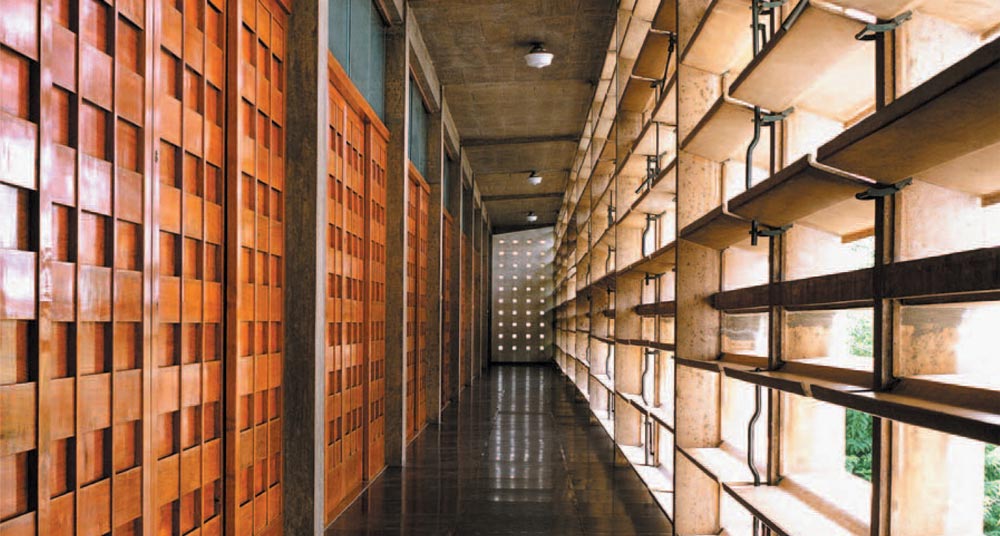
NAKASHIMA AND GOLCONDE
 While working in Japan for Czech-American architect Antonin Raymond who had collaborated with Frank Lloyd Wright on the Imperial Hotel, George Nakashima traveled throughout Japan extensively and learned about traditional Japanese architecture. In 1936, after conceiving its initial design and construction, Raymond sent Nakashima to Pondicherry, India for three years and entrusted him to work as project architect on Golconde, a dormitory for the Sri Aurobindo Ashram.
While working in Japan for Czech-American architect Antonin Raymond who had collaborated with Frank Lloyd Wright on the Imperial Hotel, George Nakashima traveled throughout Japan extensively and learned about traditional Japanese architecture. In 1936, after conceiving its initial design and construction, Raymond sent Nakashima to Pondicherry, India for three years and entrusted him to work as project architect on Golconde, a dormitory for the Sri Aurobindo Ashram.
Golconde is the first reinforced, cast-in-place concrete building in India. Nakashima altered Raymond’s design to accommodate the region’s hot tropical climate, adding a precast barrel-vaulted roof and plenum to insulate from the sun. While at the Ashram, Nakashima became so immersed in its philosophy and way of life that he became a disciple of spiritual leader and philosopher Sri Aurobindo, taking on the Sanskrit name ‘Sundarananda’ – one who delights in beauty. Here he practiced “Integral Yoga,” the yoga-based philosophy of selflessness that influenced Nakashima’s work at Golconde and throughout his entire career.
Nakashima worked with a team of devotees and residents of the Ashram, a mix of skilled and unskilled workers, most with no prior construction experience. Completed in 1942, Golconde features experimental forms that combine early Modernist influences such as straight lines, creating new concrete form work and climate-specific environmental adaptations, such as louvered walls, ventilating breezeways, horizontally slatted sliding teak doors, all in a north-south orientation set amidst what is now lush landscaping.
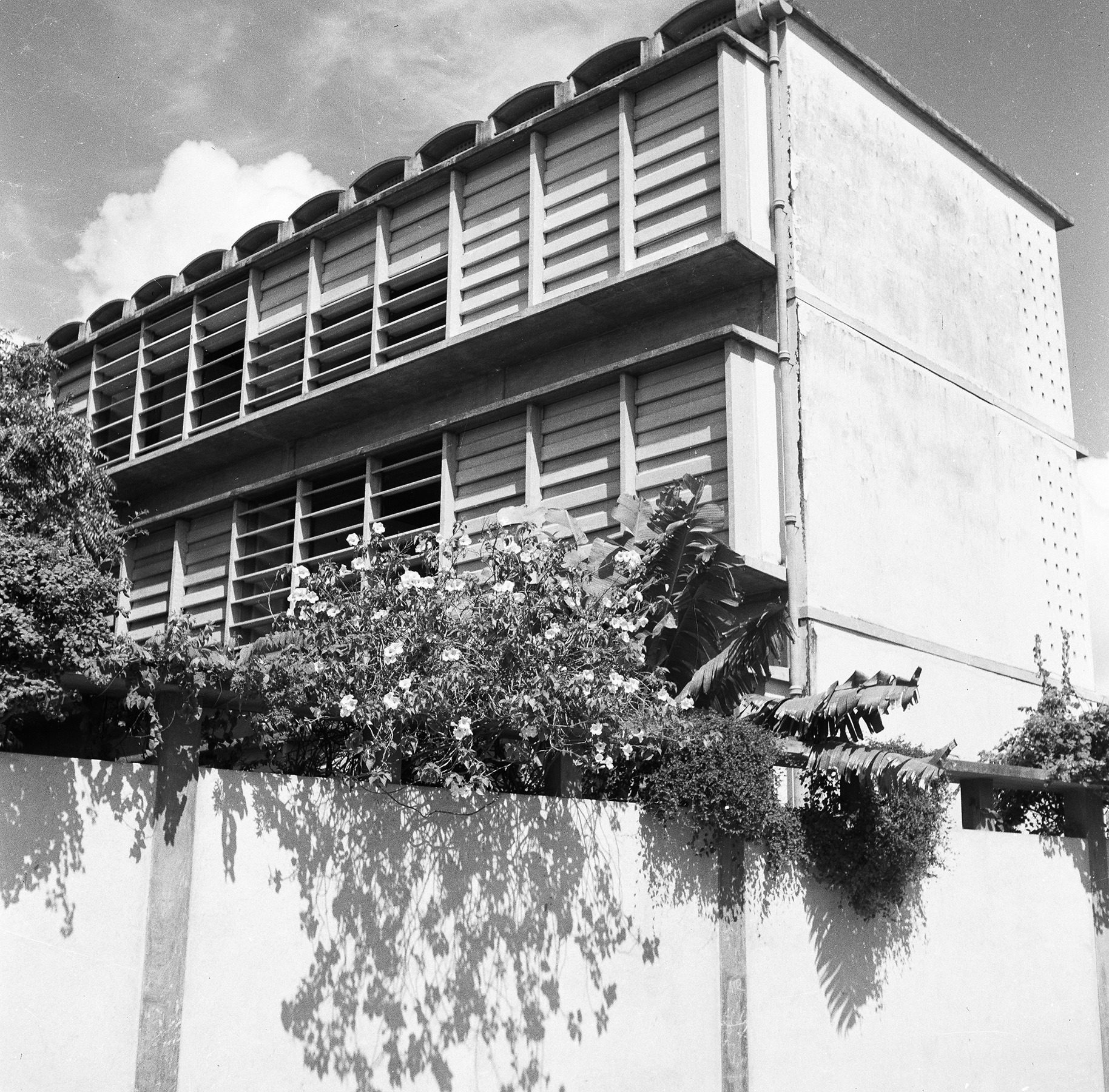
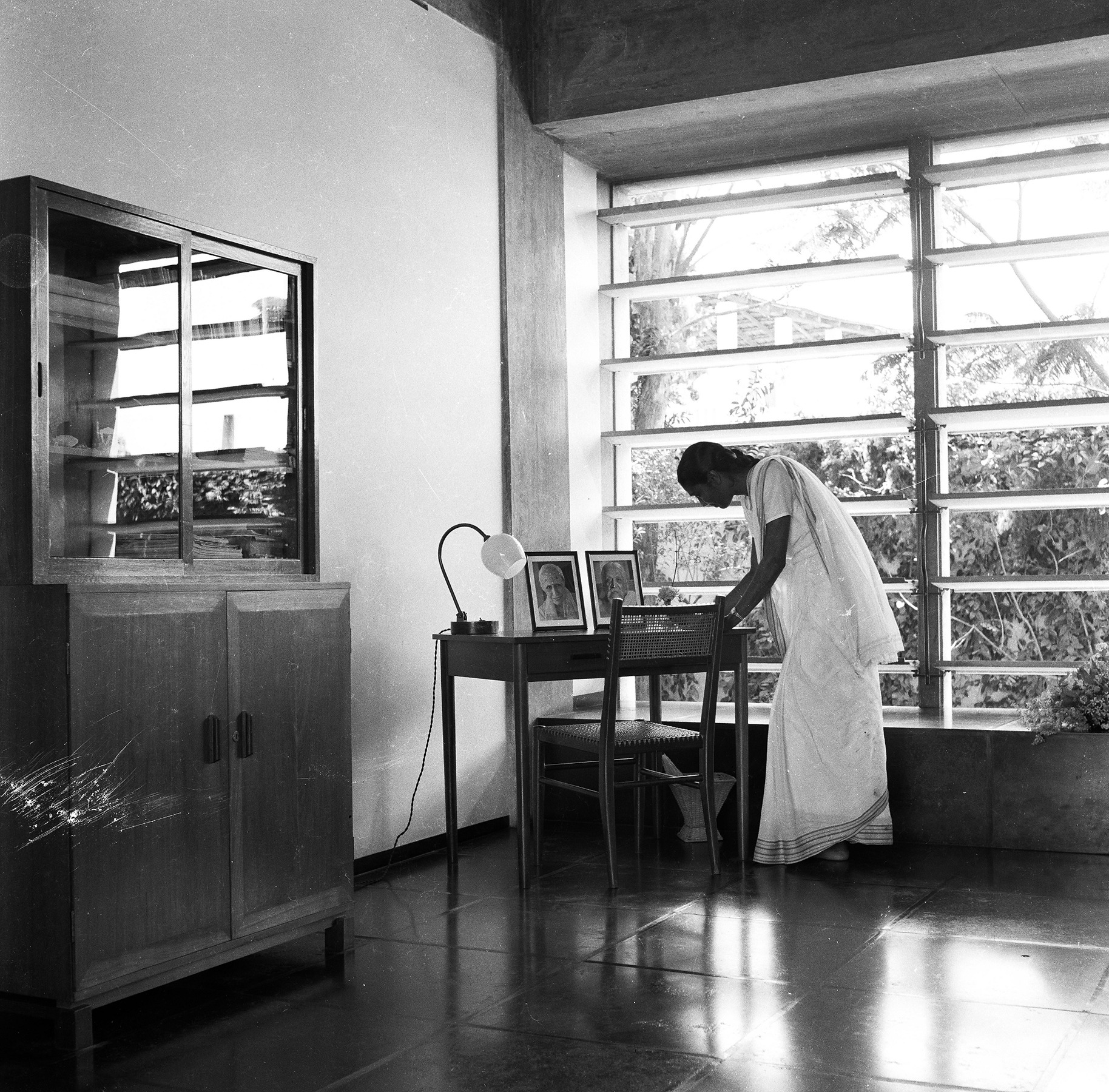
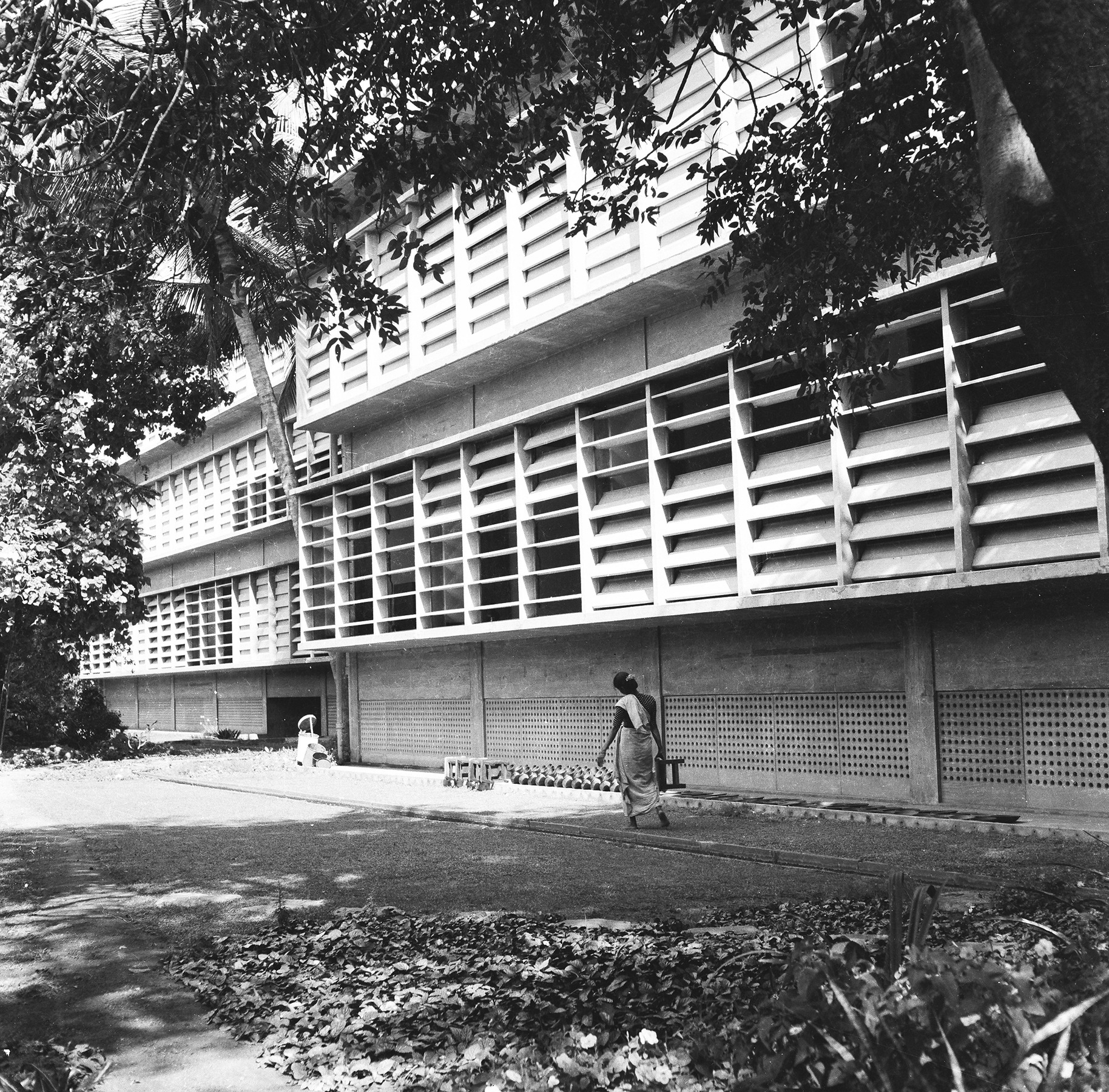
ABOUT THE EXHIBIT
The Golconde exhibit was inaugurated at the University of Texas in Austin, then traveled to Chicago, Arizona, Seattle and Virginia before arriving in New Hope. It is a glimpse into the “discovery” of Golconde by Pankaj and Christine Gupta, founding partners of VirMueller architects in Delhi in 2003. They discovered a building with an atmosphere of peace and beauty remaining intact since it was completed during World War II.
During their research and documentation, Pankaj and Christine were allowed unprecedented access to the Ashram archives, unearthing archival photographs and reproducing the original architectural drawings to illustrate the conditions that led to the creation of Golconde.
The exhibition included construction drawings, architects’ letters and large-scale color photographs of the dramatic building and landscape. Curators Pankaj Vir Gupta, and Christine Mueller created a series of full-scale color prints on fabric, hung so that observers are immersed in a three-dimensional sense of the remarkably beautiful spaces and forms.
The exhibition coincided with the reprinting of the second edition of the book, “Golconde, The Introduction of Modernism in India” (Actar Press) by Pankaj Vir Gupta and Christine Mueller.
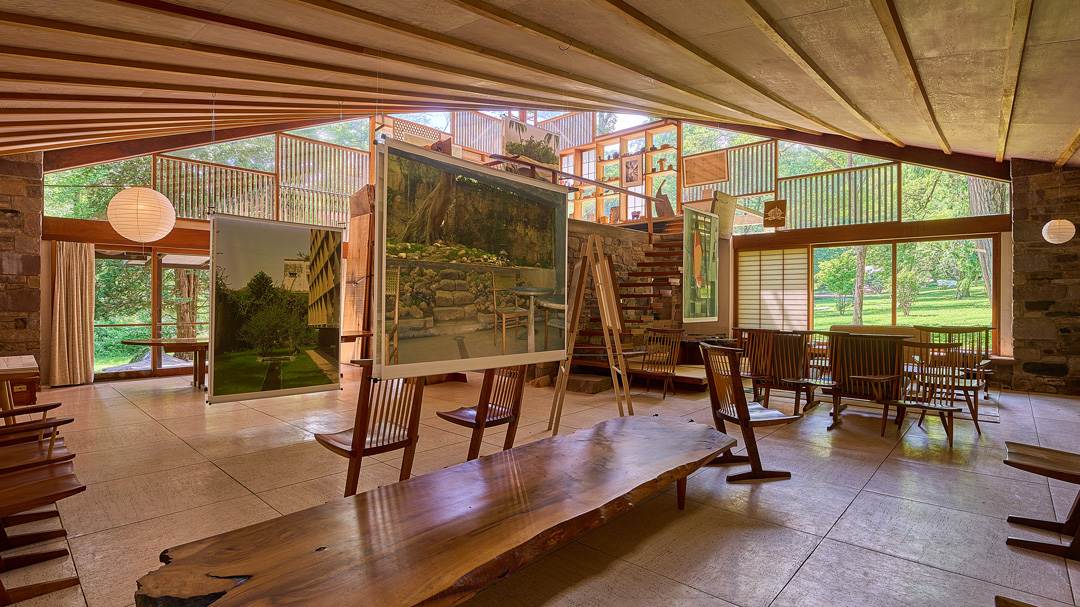
On October 15, 2023, the Foundation held a closing celebration of the exhibition. The event featured Indian music by Vinay Desai, an accomplished musician on the Santoor (hammered dulcimer) who studied under the renowned maestro Pandit Shivkumar Sharma. He was accompanied on tabla (drums) by Pandit Samir Chatterjee, who has played with many of India’s greatest musicians including Pandit Ravi Shankar. An Indian appetizer reception was presented by Cross Culture restaurant. View a full recording of the ceremony below.
![Nakashima-Foundation-For-Peace---Logo-02[5]](https://nakashimafoundation.org/wp-content/uploads/2025/03/Nakashima-Foundation-For-Peace-Logo-025-1.png)
